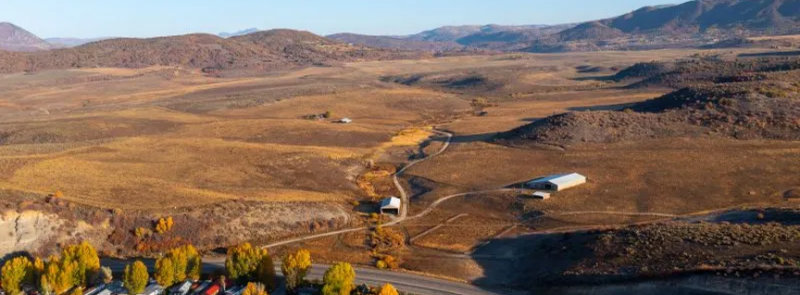
How can we harness the energy from Earth’s relatively stable natural temperature to help meet sustainability goals and regulate buildings’ heating and cooling? Geothermal Heat Pumps (GHP) draw heat to and from the ground — or a body of water — replacing traditional HVAC systems.
GHP systems use renewable energy sources and produce zero carbon emissions, which can help facilities reach the benchmarks outlined in the Federal Building Performance Standard released in December 2022.
At Page, we implement unique solutions to reduce the impact of buildings on our environment. For example, Page's integrated team — including Building Science, Engineering, and Planning, Strategy, and Analytics — carefully analyzed energy use for an affordable housing development, Brown Ranch, in Colorado. Our Energy Master Plan proposed a community GHP system to offer greater efficiency and reduce energy use by up to 62%.
Geothermal Heat Pumps Explained
Since the earth's temperature is relatively stable, GHP systems can return heat to or take heat from the earth. The ground temperature is warmer than the air during the winter, so it’s used as a heat source. And in the summer, the ground is cooler than the air and can be used for heat storage. This energy exchange can also have a net-zero change in normal earth conditions, meaning there is little to no effect on the earth.
The system consists of three main components: the heat exchanger, the heat pump unit, and the air distribution system. The heat exchanger is a series of underground pipes filled with a fluid, usually water.
In the winter, the fluid in the pipes absorbs heat from the ground and carries it to the heat pump unit, which includes a compressor, heat exchanger, and refrigerant. The compressor squeezes the refrigerant gas, which raises its temperature, and the heat exchanger transfers the heat from the compressed gas to the air distribution system.
In the summer, the process is reversed. The heat pump extracts heat from the indoor air and transfers it to the fluids in the pipes. The liquid then carries the heat back into the ground, where it is absorbed and stored.
While there is a more significant initial investment, a geothermal heating and chilling system reduces operational costs. According to EPA, a Geothermal Heat Pump reduces the amount of energy required and the rate we use it by 40% for cooling and 70% for heating, decreasing energy costs by up to 50%. ASHRAE studies show the maintenance cost is significantly less.
Additionally, the Inflation Reduction Act of 2022 made geothermal heating and cooling more affordable than ever, providing a 40% credit for systems installed before January 2033. Strikingly, this law will help reduce greenhouse gas emissions by 40% by 2030.
Brown Ranch’s Energy Master Plan
Page developed a detailed Energy Master Plan for Brown Ranch’s greenfield affordable housing community, which will provide future residents with the best possible energy value for upfront cost, lifecycle cost, resilience, and carbon emissions.
The vibrant, diverse, and welcoming neighborhood will rest on a 560-acre ranch surrounded by the Rocky Mountains. The project provides a wide variety of housing options and services designed by and for the Yampa Valley community.
Page’s team demonstrated the substantial advantages of a community geothermal system relying on water source heat pumps which will yield a 32% reduction in the total cost of ownership before taking advantage of available incentives. And the stakeholders may see a return on investment within four to six years. With credits from the government, the payback is significantly expedited.
The proposed geothermal system will also use 51.5% less energy than a traditional option, with a 62% reduction at peak energy use. With the GHP system, the development can reach net-zero carbon emissions, which helps mitigate climate change!
Opting for a geothermal system means choosing improved efficiency and contributing to the goal of reaching net-zero emissions by 2050. The Brown Ranch Energy Master Plan showcases Page’s mission of restoring and improving the sites, neighborhoods, and cities within which we build.